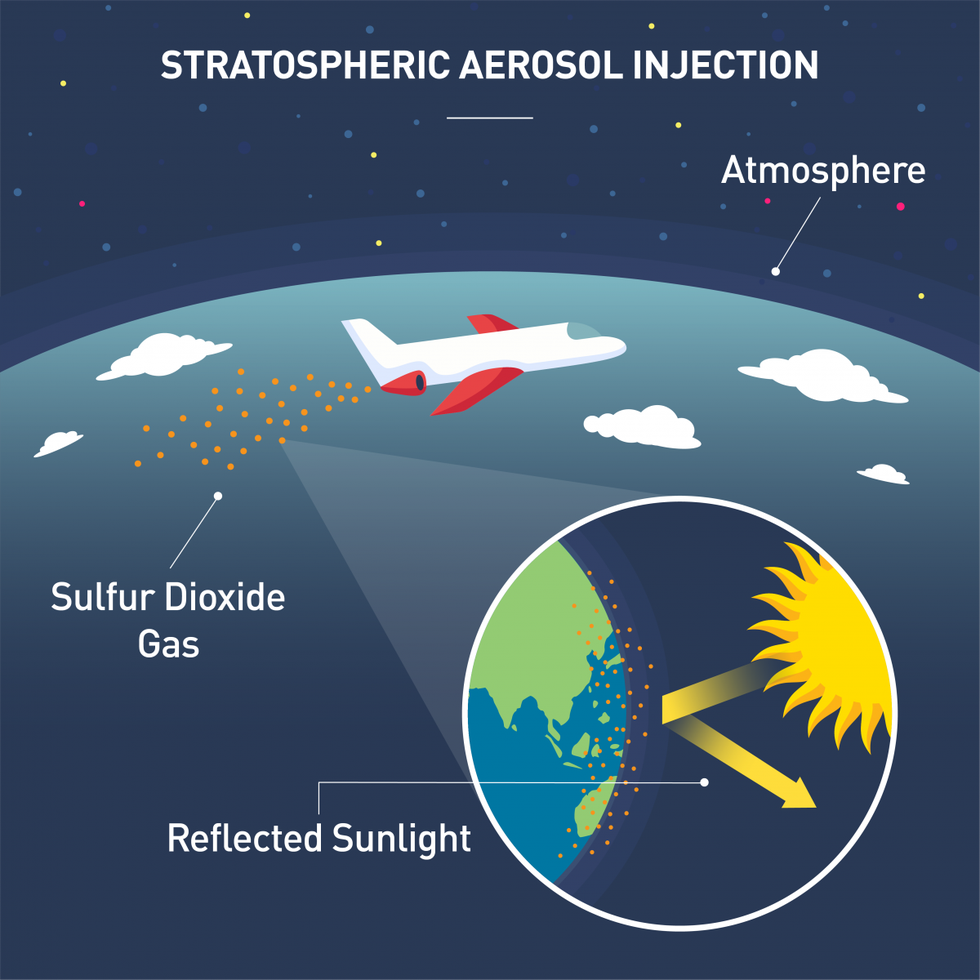About the Stratospheric Aerosol Intervention (SAI):
- Stratospheric Aerosol Intervention (SAI), also known as Stratospheric Aerosol Injection, is a geoengineering or climate engineering approach that uses tiny reflective particles or aerosols to reflect sunlight into space in order to cool the planet and reverse or stop global warming.
- It aims to mimic the cooling effects of volcanic eruptions by injecting Sulphur dioxide (SO2) directly into the stratosphere, where it forms sunlight-reflecting sulphate aerosols.
- The 1991 eruption of Mount Pinatubo in the Philippines, often cited as the inspiration for this concept, deposited massive amounts of particulate matter and Sulphur dioxide (SO2) into the atmosphere.
- This aerosol layer was reported to have lowered average temperatures around the world by about 0.5 °C (0.9 °F) over the following few years.
- It is believed that as more radiation is scattered in the stratosphere by aerosols, less would be absorbed by the troposphere, the lower level of the atmosphere where weather primarily occurs.
- The production of such an artificial aerosol layer could be accomplished by shooting Sulphur particles into the stratosphere with cannons or dispersing them from balloons or other aircraft.
Key Facts about Aerosols:
- They are tiny solid or liquid particles suspended in air or gas.
- Aerosols can be natural, such as fog or gas from volcanic eruptions, or artificial, such as smoke from burning fossil fuels.
- Aerosol particles are either emitted directly into the atmosphere (primary aerosols) or produced in the atmosphere from precursor gases (secondary aerosols).
- Aerosol particles are tiny, but numerous, and often comprise a number of inorganic and organic substances.
- Particles with a diameter of less than 0.1 micrometre are sometimes referred to as Aitken nuclei.
- Visible forms of atmospheric aerosol plumes include smoke, smog, haze, and dust.
